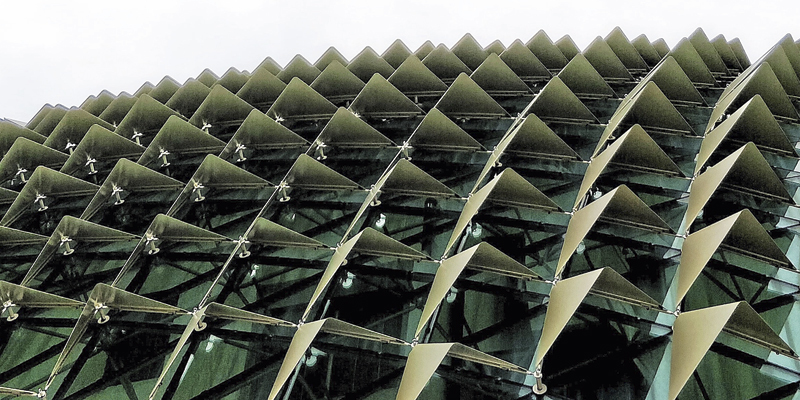Eight years after its launch, many countries are using the Land Administration Domain Model to develop land administration systems. Christiaan Lemmen, Peter van Oosterom and Eftychia Kalogianni report on the implementations so far – as well as what to expect from the next version.

In 2012, the Land Administration Domain Model (LADM) was approved as an official ISO standard. LADM stimulates the development of software applications and accelerates the implementation of proper land administration systems in support of sustainable development. It supports interoperability in land administration – a real need because land administration is mostly implemented under distributed mandates with many stakeholders.
The LADM provides an internationally recognised model and vocabulary standard, which provide a solid foundation for the development process. It covers the ‘information-related’ components of land administration, including those over water and land, and elements above and below the surface of the earth. This means in practice that the representation of all tenure types is being supported – even when overlapping – and that 3D cadastres can be developed using the standard.
There are now implementations of LADM all over the world. For example, The Mozambican land information management system, SiGIT, was developed under a government project called Land Tenure Security by a local firm, EXI, in cooperation with the country’s National Directorate for Land (DINAT). LADM is the foundation for SiGIT’s architecture and was the first LADM-based country implementation. SiGIT supports rural and urban land administration processes. For this application the functionality was added to the LADM in support to valuation and taxation.
The Indonesian National Land Office BPN implemented LADM as its standard for management of the national land administration. A nationwide project on systematic land registration is ongoing using mobile technologies. This is in support to the acceleration of the mapping of all land parcels with assured land data quality. The data structure of the app is completely in alignment with the LADM basic classes. It is targeted to help government surveyors and para surveyors to collect physical documents from landowners by scanning photos. Application forms and related formal letters submitted by landowners can be sent to central databases. Geotagged video and photo in regard to identity and means of boundary determination of the field for each land parcel can be stored and uploaded into the databases. The app can connect to a GPS antenna to gain more accurate coordinates of land boundaries.
Colombia is going through an important moment in the alignment of initiatives focusing on land administration modernisation. Among the most important milestones in this is the LADM Colombian profile definition as a semantics standard, which had been included in the public policy standard definition. For the fit-for-purpose data collection app, technology was developed in cooperation with Esri for collecting geometric and administrative/legal data.
The execution of the land administration in Benin is assigned to the L’Agence Nationale du Domaine et du Foncier (ANDF). The country has decided upon a centralised land administration, with the objective of recording the entire national territory – seven million parcels.
The LADM Country Profile for Benin is currently under development. It is a conceptual model that will be used as a foundation for the development and implementation of a new Système Informatique Founciers in Benin. The LADM Country Profile for Benin supports in functionality the existing title system in the country and the new developed ‘lighter’ process for non-titled ‘presumed ownership’ in a fit-for-purpose approach for land administration.
Malaysia developed a LADM country profile in 2014 and now a database design and development of a prototype 3D cadastral registration is available. The key aspects of this prototype are based on LADM. LADM defines 3D parcel as a spatial unit against which (one or more) unique and homogeneous rights (e.g. ownership right or land use right), responsibilities or restrictions are associated to the whole entity. Spatial units have two specialisations: legal spaces buildings and legal spaces networks. The extensions of the Malaysian country profile focus on 3D space of spatial unit based on strata objects representation.
This is just the tip of the iceberg, however. There are other implementations in China, Greece, Indonesia and the Russian Federation and Scotland, with software providers including Esri and Innola offering LADM-based services and solutions.
A new edition
A new version of LADM is under development through cooperation between ISO, OGC, IHO, UN GGIM and FIG. It will include extended functionality to support valuation, taxation, spatial planning and zoning (with a focus on restrictions on land rights).
Meanwhile, the Global Land Indicator Initiative (GLII) seeks to derive a list of globally comparable harmonised land indicators, using existing monitoring mechanisms and data collection methods as a foundation. Hence, the LADM is extended with attributes enabling monitoring, based on those indicators.
In addition to the conceptual model, the intention is that the second edition of LADM will include the corresponding technical models – CityGML, InfraGML, RDF, INTERLIS, BIM/IFC, GeoJSON – and the land administration processes. Finally, it will also include a methodology of how the develop a country profile.
Christiaan Lemmen is senior geodetic advisor at Kadaster, Netherlands; Peter van Oosterom is professor of GIS technology at Delft University of Technology, Netherlands; and Eftychia Kalogianni is a surveyor engineer-GIS specialist at NAMA Consulting Engineers and Planners SA, Greece


